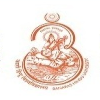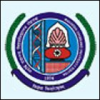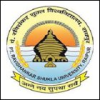How to become a Remote Sensing Scientist and Technologist
Overview, Courses, Exam, Colleges, Pathways, Salary

Overview
Who is Remote Sensing Scientist and Technologist ?
A remote sensing scientist and technologist is a professional who specializes in utilizing satellite or airborne imagery, as well as other remote sensing technologies, to study and analyze the Earth's surface and atmosphere. They employ advanced techniques and tools to gather and interpret data for various applications, including environmental monitoring, urban planning, agriculture, natural resource management, and climate change analysis.
Remote sensing scientists and technologists are skilled in acquiring and processing data from satellite sensors, such as optical, thermal, and radar sensors. They use sophisticated software and algorithms to analyze the collected imagery and extract valuable information about land cover, vegetation health, atmospheric conditions, and other geospatial features.
These professionals possess expertise in geospatial analysis, image classification, and data interpretation. They often work with geographic information systems (GIS) to integrate remote sensing data with other geospatial datasets for comprehensive analysis and visualization.
Strong analytical and problem-solving skills, along with proficiency in programming and remote sensing software, are essential for remote sensing scientists and technologists. They stay updated with the latest advancements in remote sensing technologies and methodologies to ensure accurate and reliable data analysis. By harnessing the power of remote sensing, these professionals contribute to our understanding of Earth's systems and provide valuable insights for informed decision-making and sustainable resource management.
Typical day at work
What does Remote Sensing Scientist and Technologist do?
- Data Acquisition: Remote sensing scientists and technologists acquire satellite or airborne imagery using various remote sensing platforms. They select appropriate sensors, plan data collection missions, and ensure data quality and integrity.
- Image Processing and Analysis: These professionals use specialized software and algorithms to process and analyze remote sensing data. They apply image enhancement techniques, perform image classification and feature extraction, and utilize statistical and spatial analysis methods to derive meaningful information from the imagery.
- Data Interpretation and Mapping: Remote sensing scientists and technologists interpret the analyzed data to identify and map various features and phenomena on the Earth's surface. They create thematic maps, such as land cover maps, vegetation indices, and surface temperature maps, to support scientific research or practical applications.
- Research and Development: These professionals contribute to the development and improvement of remote sensing techniques, algorithms, and software tools. They conduct research studies to advance the understanding of remote sensing methodologies and explore new applications.
- Project Design and Management: Remote sensing scientists and technologists design and manage remote sensing projects. They define research objectives, develop data collection protocols, coordinate field surveys for data validation, and oversee project timelines and budgets.
- Collaboration and Communication: Remote sensing scientists and technologists collaborate with interdisciplinary teams, including geographers, environmental scientists, and GIS specialists. They communicate findings and insights through reports, presentations, and scientific publications.
- Applications Development: Some remote sensing scientists and technologists develop specialized applications or tools to automate and streamline remote sensing processes. This can involve programming and software development to create customized solutions for specific research or operational needs.
- Stay Updated with Technology: Remote sensing scientists and technologists stay abreast of the latest advancements in remote sensing technologies, sensors, and software. They continuously expand their knowledge and skills to adapt to emerging trends and incorporate cutting-edge techniques into their work.
Abilities and Aptitude needed
What are the skills, abilities & aptitude needed to become Remote Sensing Scientist and Technologist?
- Strong Analytical Skills: Remote sensing scientists and technologists must possess strong analytical skills to effectively process and interpret remote sensing data. They should be able to identify patterns, trends, and anomalies in the imagery and analyze complex geospatial information.
- Technical Proficiency: Proficiency in remote sensing technologies, data processing software, and geospatial analysis tools is essential. This includes knowledge of remote sensing sensors, image processing techniques, statistical analysis, and geographic information systems (GIS).
- Geospatial Awareness: A solid understanding of geospatial concepts and spatial relationships is important. Remote sensing scientists and technologists should have knowledge of coordinate systems, map projections, and geodatabase management.
- Programming and Scripting: Proficiency in programming languages such as Python, R, or MATLAB is valuable for automating processes, developing custom tools, and performing data analysis in remote sensing applications.
- Critical Thinking and Problem-Solving: Remote sensing scientists and technologists encounter complex problems and challenges in data analysis and interpretation. They need to employ critical thinking and problem-solving skills to devise innovative solutions and overcome obstacles.
- Attention to Detail: Remote sensing work requires meticulous attention to detail. Scientists and technologists must carefully assess and validate data, perform accurate image classification, and ensure the reliability and quality of remote sensing products.
- Communication and Collaboration: Effective communication skills are essential for collaborating with interdisciplinary teams and presenting findings to diverse audiences. Remote sensing scientists and technologists should be able to convey complex technical concepts in a clear and understandable manner.
- Continuous Learning: The field of remote sensing is constantly evolving, with new technologies and techniques emerging. A willingness to engage in continuous learning and stay updated with the latest advancements is crucial for remote sensing scientists and technologists.
- Environmental and Scientific Knowledge: Remote sensing scientists and technologists should have a solid understanding of environmental processes, earth sciences, and ecological concepts to effectively interpret remote sensing data in the context of the natural world.
Salary
Salary for Remote Sensing Scientist and Technologist?
Salary for Remote Sensing Scientists and Technologists in India:
- Minimum Monthly Salary: For entry-level Remote Sensing Scientists and Technologists or those with limited experience, the monthly salary might be around INR 30,000 to INR 50,000.
- Maximum Monthly Salary: Highly experienced and senior-level Remote Sensing Scientists and Technologists, especially those working for renowned research institutions, government agencies, or private companies on significant projects, may earn a maximum monthly salary ranging from INR 1 lakh to INR 2 lakhs or more.
- Annual Salary: The annual salary for entry-level Remote Sensing Scientists and Technologists could be approximately INR 3.6 lakhs to INR 6 lakhs per year. Experienced and well-qualified Remote Sensing Scientists and Technologists may earn a maximum annual salary ranging from INR 12 lakhs to INR 24 lakhs or more.
- Highest-Paying Jobs and Scope: The highest-paying jobs for Remote Sensing Scientists and Technologists in India are typically with government research organizations, scientific institutions, geospatial technology companies, and environmental consulting firms. Remote Sensing Scientists and Technologists who possess advanced technical skills in remote sensing technologies, have expertise in using various remote sensing tools and software and can apply their knowledge to address critical challenges in fields like agriculture, urban planning, climate monitoring, disaster management, and natural resource management, can command higher salaries and may have opportunities for research leadership or project management roles. With the increasing importance of remote sensing in various industries and government initiatives related to environmental conservation and spatial data analysis, the career scope for Remote Sensing Scientists and Technologists in India is promising. There is a growing demand for skilled professionals leveraging remote sensing data to provide valuable insights and solutions for scientific and societal applications.
Ready to become a Remote Sensing Scientist and Technologist ?
Take the world’s best assessment test !
Take a TestPathways
How to become an Remote Sensing Scientist and Technologist?
Entrance Exam
Entrance Exam for Remote Sensing Scientist and Technologist ?
Courses
Which course I can pursue?
Best Colleges
Which are the best colleges to attend to become an Remote Sensing Scientist and Technologist?
Industries
Which Industries are open for Remote Sensing Scientist and Technologist?
- Environmental Consulting: Remote sensing scientists and technologists are employed by environmental consulting firms to assess and monitor environmental conditions, land cover changes, and ecosystem health. They provide valuable insights for environmental impact assessments, conservation efforts, and natural resource management.
- Natural Resource Management: Industries involved in forestry, agriculture, mining, and energy sectors require remote sensing expertise for land management, resource monitoring, and spatial planning. Remote sensing scientists and technologists play a crucial role in analyzing vegetation health, soil characteristics, water resources, and land use patterns.
- Urban Planning and Development: Remote sensing plays a significant role in urban planning, infrastructure development, and smart city initiatives. Remote sensing scientists and technologists contribute to mapping and monitoring urban growth, land use changes, transportation networks, and environmental impacts in urban areas.
- Government Agencies: Government agencies at various levels, such as environmental agencies, forestry departments, and disaster management organizations, employ remote sensing scientists and technologists. They use remote sensing data to inform policy decisions, support emergency response efforts, and assess the impact of natural disasters.
- Research and Academia: Remote sensing scientists and technologists often work in research institutions and academic settings. They contribute to scientific research projects, develop new remote sensing methodologies, and educate the next generation of professionals in the field.
- Geospatial Technology Companies: Many companies specialize in providing geospatial solutions and services. Remote sensing scientists and technologists are employed to develop remote sensing products, analyze geospatial data and offer customized solutions to clients in sectors like agriculture, environmental monitoring, and infrastructure management.
- Earth Observation and Satellite Imagery Providers: Remote sensing scientists and technologists can work for companies that specialize in satellite imagery acquisition, data processing, and remote sensing analysis. They contribute to the development and improvement of satellite-based remote sensing technologies and products.
- Non-profit Organizations: Non-profit organizations focused on environmental conservation, climate change research, and humanitarian efforts often employ remote sensing scientists and technologists. They utilize remote sensing data to address environmental and social challenges and support sustainable development initiatives.
internship
Are there internships available for Remote Sensing Scientist and Technologist?
- Research Institutions and Universities: Many research institutions and universities offer internships and research assistant positions in remote sensing. These opportunities allow students and early-career professionals to collaborate on ongoing research projects, gain practical experience, and contribute to scientific advancements.
- Government Agencies: Government agencies involved in environmental monitoring, natural resource management, and disaster response often offer internships in remote sensing. These internships provide exposure to real-world applications of remote sensing data and analysis.
- Private Companies: Geospatial technology companies and remote sensing service providers may offer internships to students and recent graduates. These internships provide exposure to industry workflows, data processing techniques, and the commercial applications of remote sensing.
- Non-profit Organizations: Non-profit organizations focused on environmental conservation, humanitarian efforts, and sustainability often have internship programs in remote sensing. These internships may involve using remote sensing data for environmental monitoring, mapping land cover changes, or supporting community development projects.
- Research Projects and Grants: Students and researchers can seek out research projects and grants that involve remote sensing. These projects may be funded by government agencies, private foundations, or research institutions. Engaging in research projects provides hands-on experience in data collection, analysis, and interpretation.
Career outlook
What does the future look like for Remote Sensing Scientist and Technologist?
The future outlook for remote sensing scientists and technologists is promising. The increasing availability of remote sensing data, advancements in satellite and sensor technologies, and the growing demand for geospatial analysis are driving the need for skilled professionals in this field. Remote sensing is crucial in addressing environmental challenges, urban planning, natural resource management, and climate change research. With the continuous development of remote sensing techniques and the integration of artificial intelligence and machine learning, the career opportunities for remote sensing scientists and technologists are expected to expand, providing diverse and rewarding prospects in research, industry, government, and non-profit sectors.







